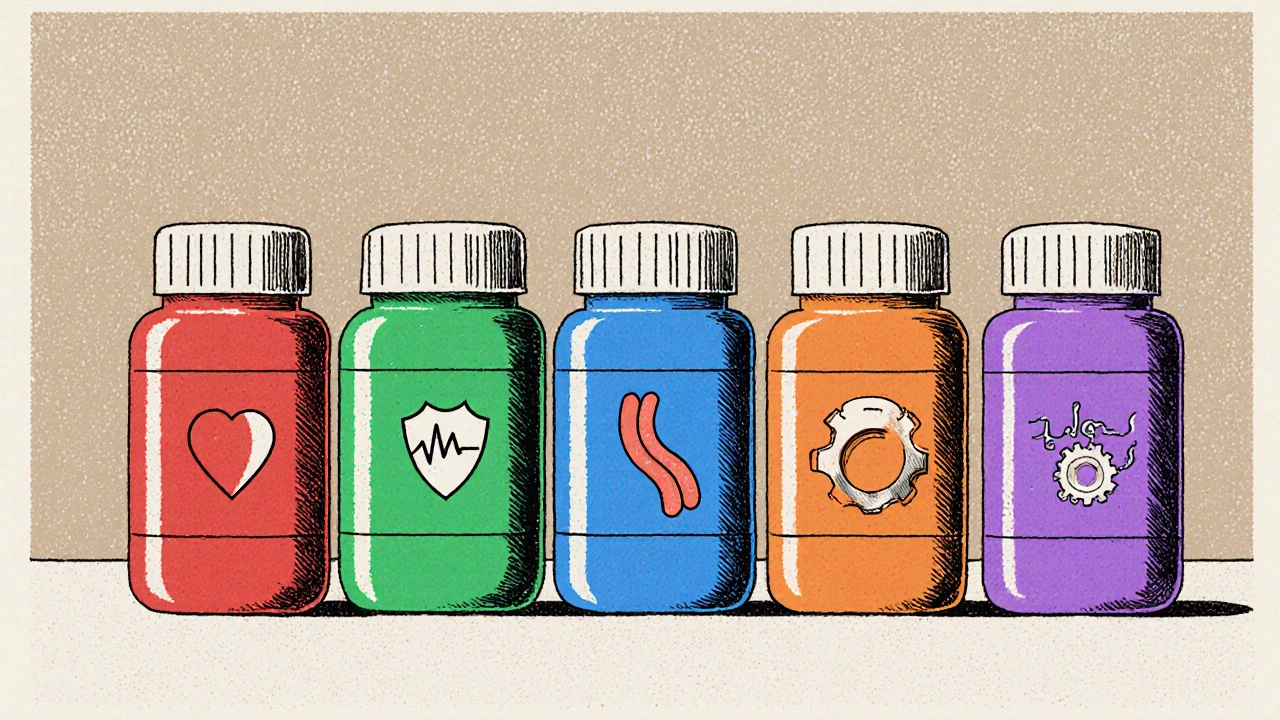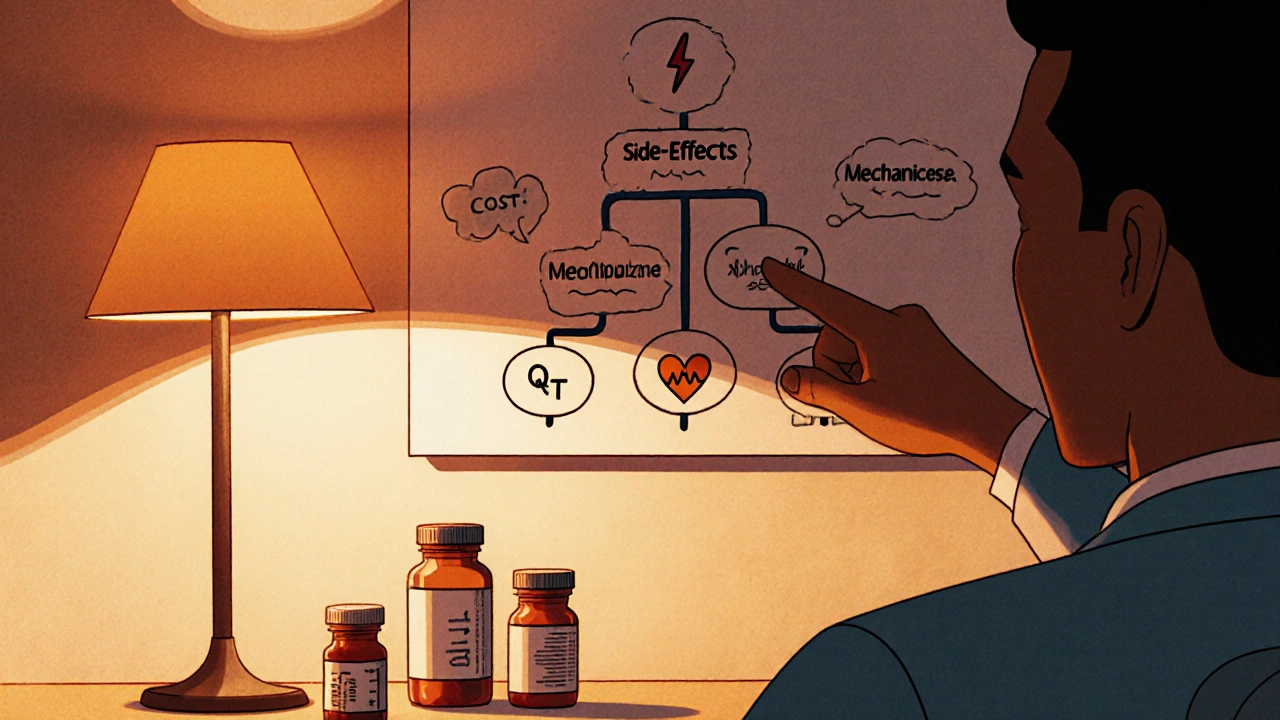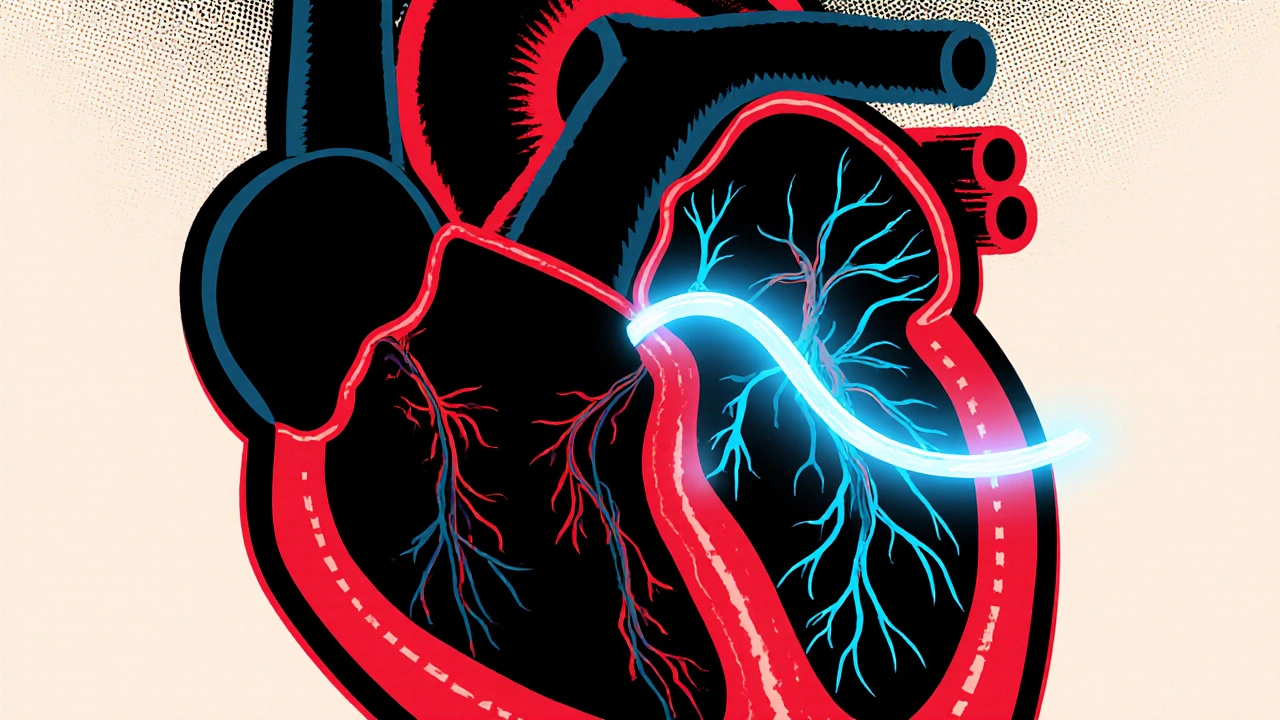When it comes to chronic stable angina, doctors have a toolbox of drugs, but Ranolazine vs alternatives often sparks the biggest debate. Below you’ll find a straight‑to‑the‑point breakdown of Ranolazine (brand name Ranexa) and the most common rivals, so you can tell which one fits your heart health plan.
What is Ranolazine?
Ranolazine is an anti‑anginal agent that improves myocardial blood flow by inhibiting the late sodium current in cardiac cells. It is marketed under the brand name Ranexa and received FDA approval in 2006. In the UK, the NHS includes it as a second‑line option after beta‑blockers and calcium‑channel blockers.
Key points:
- Indicated for chronic stable angina when other therapies are insufficient.
- Typical dose: 500 mg twice daily, titrated to 1000 mg twice daily.
- Common side effects: dizziness, nausea, constipation, and a mild QT‑interval prolongation.
- Cost: average US retail price around $350 per month (generic version cheaper).
Why Look at Alternatives?
No drug is perfect. Ranolazine’s benefits come with drawbacks-especially the QT prolongation risk and its relatively high price. Patients and physicians often ask: “Is there a cheaper or safer option that does the same job?” The answer is yes, but each alternative carries its own trade‑offs.
Top Alternatives at a Glance
Below are the four most frequently prescribed alternatives, each with a distinct mechanism of action.
- Ivabradine - slows heart rate by inhibiting the funny (If) channel.
- Metoprolol - a beta‑blocker that reduces heart‑rate and contractility.
- Amlodipine - a calcium‑channel blocker that dilates coronary arteries.
- Trimetazidine - a metabolic modulator that shifts cardiac energy use from fatty acids to glucose.

Side‑Effect Profiles Compared
Side effects often decide the winner. Here’s how each drug stacks up.
| Drug | Common Issues | Serious Risks | Contra‑indications |
|---|---|---|---|
| Ranolazine | Dizziness, nausea, constipation | QT prolongation, arrhythmia | Severe liver disease, concomitant CYP3A4 inhibitors |
| Ivabradine | Bradycardia, visual phosphenes | Severe hypotension | Sinus node dysfunction, atrial fibrillation |
| Metoprolol | Fatigue, cold extremities, insomnia | Bronchospasm in asthmatics | Severe asthma, overt bradycardia |
| Amlodipine | Peripheral edema, flushing | Severe hypotension when combined with other vasodilators | Severe aortic stenosis |
| Trimetazidine | GI upset, headache | Parkinsonian symptoms (rare) | Severe renal impairment |
Mechanistic Differences
Understanding how each drug works helps you anticipate benefits and limitations.
- Ranolazine: Blocks the late inward sodium current, reducing intracellular calcium overload and improving diastolic relaxation.
- Ivabradine: Selectively inhibits the If pacemaker current in the sino‑atrial node, lowering heart rate without affecting contractility.
- Metoprolol: Antagonizes β₁‑adrenergic receptors, decreasing heart rate, contractility, and oxygen demand.
- Amlodipine: Inhibits L‑type calcium channels, causing arterial vasodilation and reduced afterload.
- Trimetazidine: Shifts myocardial metabolism from fatty‑acid oxidation to glucose oxidation, making the heart more efficient under ischemic conditions.
Cost Considerations
Price can be a make‑or‑break factor, especially for chronic therapy.
- Ranolazine (brand Ranexa): US retail ≈ $350/month; generic ≈ $150/month.
- Ivabradine (brand Corlanor): ≈ $250/month.
- Metoprolol (generic): ≈ $10-$20/month.
- Amlodipine (generic): ≈ $5-$15/month.
- Trimetazidine (generic in Europe): ≈ $30-$50/month.
In the UK, the NHS typically covers metoprolol, amlodipine, and sometimes ivabradine, while Ranolazine is prescription‑only and may require a co‑pay.

Choosing the Right Drug: Decision Guide
Here’s a quick cheat‑sheet to match patient profiles with the most suitable option.
| Patient Profile | Best Fit | Why? |
|---|---|---|
| Persistent angina despite beta‑blocker + CCB | Ranolazine | Unique sodium‑current blockade adds relief without further lowering heart rate. |
| Need to lower heart rate but cannot tolerate beta‑blockers (e.g., asthma) | Ivabradine | Selective If inhibition spares bronchial β‑receptors. |
| Cost‑sensitive patient, mild‑to‑moderate angina | Metoprolol or Amlodipine | Both are cheap, widely available, and effective as first‑line agents. |
| Patient on multiple vasodilators, concerned about edema | Metoprolol | Beta‑blocker does not cause peripheral edema. |
| Ischemic heart disease with metabolic inefficiency | Trimetazidine | Improves myocardial efficiency without altering hemodynamics. |
Practical Tips for Clinicians
- Start with a beta‑blocker (e.g., metoprolol) and a CCB (e.g., amlodipine) in most patients.
- If angina persists, evaluate QT interval before adding Ranolazine.
- For patients with asthma or COPD, consider ivabradine before a beta‑blocker.
- Check renal and hepatic function when prescribing ranolazine or trimetazidine.
- Discuss out‑of‑pocket costs early; generic options can dramatically reduce expense.
Frequently Asked Questions
Can I take Ranolazine with a beta‑blocker?
Yes. Ranolazine is often added when beta‑blockers and calcium‑channel blockers fail to fully control angina. No known pharmacokinetic clash, but monitor heart rate and QT interval.
Is Ranolazine safe for patients with kidney disease?
Dose adjustment is recommended for severe renal impairment (creatinine clearance <30 mL/min). In mild‑to‑moderate cases, standard dosing is usually okay.
How does the effectiveness of Ivabradine compare to Ranolazine?
Ivabradine mainly reduces heart rate, which helps if tachycardia drives angina. Ranolazine improves myocardial relaxation regardless of heart rate. Clinical trials show similar symptom relief in selected groups, but Ranolazine works better when heart rate isn’t the main issue.
Will insurance cover Ranolazine in the UK?
The NHS typically reserves Ranolazine for patients who remain symptomatic after standard first‑line agents. Private insurers often cover it if prescribed by a cardiologist with documented need.
Are there any food interactions with Ranolazine?
High‑fat meals can increase Ranolazine’s absorption, raising plasma levels by up to 40 %. Take it with a low‑fat snack or follow your doctor’s dosing advice.
Bottom line: Ranolazine shines as a rescue drug for stubborn angina, but cheaper, well‑tolerated options like metoprolol, amlodipine, or ivabradine often make first‑line sense. Weigh mechanism, side‑effect profile, cost, and individual comorbidities before deciding.


Erin Leach
I totally get how confusing the drug choices can be, especially when you’re juggling side‑effects and the bill. Ranolazine’s unique action can be a game‑changer for people who don’t respond to the usual beta‑blocker/CCB combo. If the QT‑prolongation scares you, a quick EKG check after the first week is all it takes to stay safe. The generic version brings the price down dramatically, so it’s worth asking your pharmacist about it. Keep the conversation open with your cardiologist – they’ll help you weigh the risks versus the benefits.